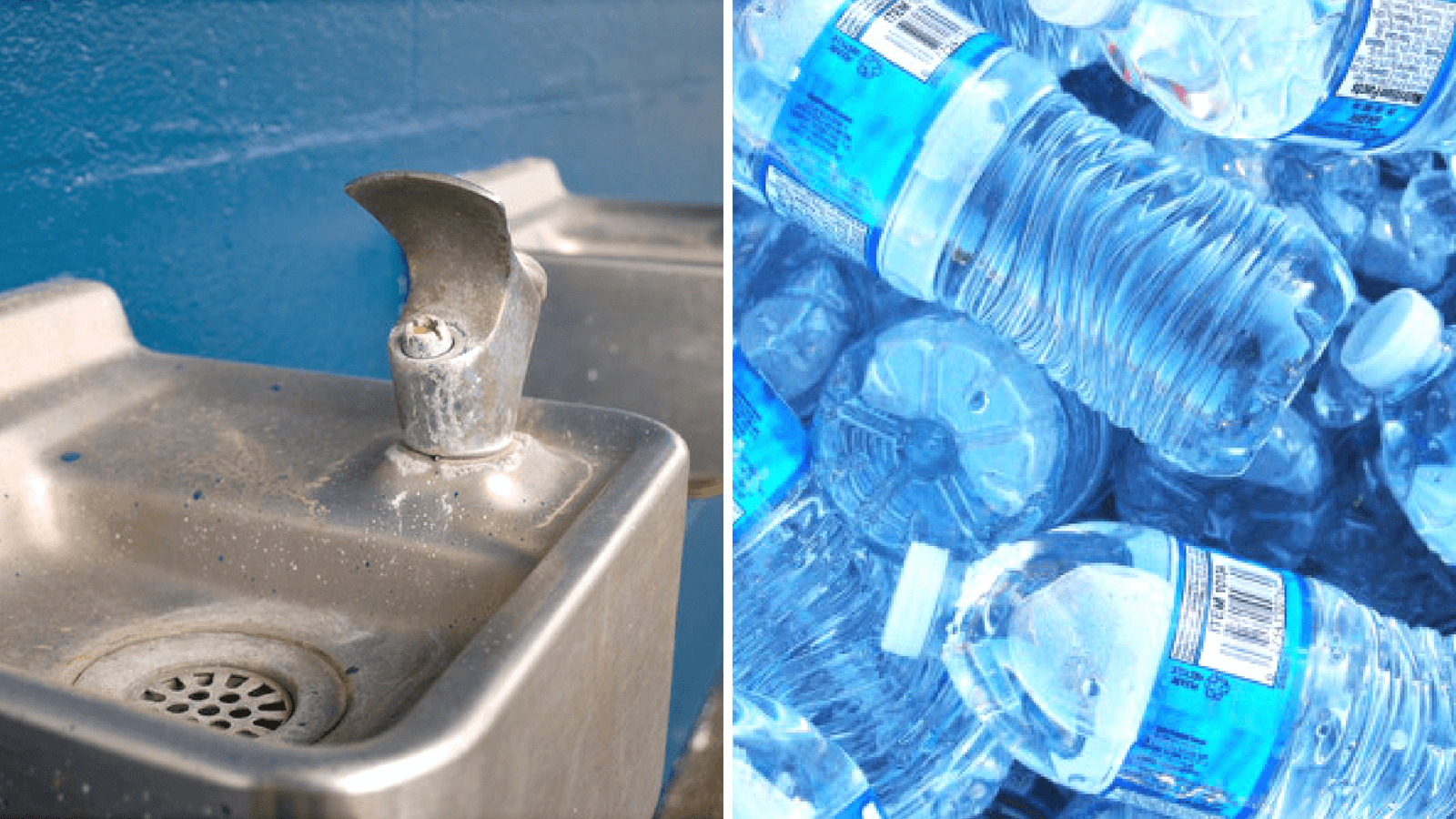DETROIT — Nearly 50,000 students headed back to school in Detroit, Michigan will be greeted by bottled water this year in lieu of traditional drinking fountains and water faucets, after tests showed elevated levels of lead and copper in the water.
According to a statement made on Wednesday, Detroit Public Schools Community District (DPSCD) Superintendent Nikolai P. Vitti initiated water testing last spring at all school district buildings “to ensure the safety” of all students and employees. “This testing, unlike previous testing, evaluated all water sources from sinks to drinking fountains,” Vitti said.
Elevated levels of lead and/or copper were revealed last week in 16 of 24 schools for which results have so far been received. In response, water was immediately shut off to those schools.
Drinking fountains and other faucets will be shut off at all schools before the school year begins on Tuesday, according to Chrystal Wilson, school district spokeswoman.
The water provided by Detroit Water and Sewerage Department (DWSD) meets standards, making the actual fixtures and lines within schools the culprit when it comes to the high toxin levels. DWSD and the Great Lakes Water Authority issued a joint statement informing residents that the lead and copper contamination is unique to the aging school buildings and is not a result of infrastructure delivering water to their customers homes.
Vitti, who became DPSCD superintendent only last year, made the decision to shut water off to ten schools during the 2017-18 school year after being notified that the schools were using a DiHydro filtration system.
Vitti said in his statement:
The latest water results [16 schools], coupled with those from 2016 [10 DiHydro schools] and follow-up results in the spring of 2018 for schools identified with concerns in 2016 [8 schools], brings the total number of schools with water quality issues to 34.”
Of the remaining schools, Vitti added:
Although we have no evidence that there are elevated levels of copper or lead in our other schools [over 50] where we are awaiting test results, out of an abundance of caution and concern for the safety of our students and employees, I am turning off all drinking water in our schools until a deeper and broader analysis can be conducted to determine the long-term solutions for all schools.”
According to Vitti, Detroit’s mayor and his team will be partnering with DPSCD to find solutions to the issue of water quality. The Mayor’s Office will also “require all city charter schools to participate in the same level of water testing” as Detroit Public Schools. Detroit currently has 15 charter and independently run public schools operating within its city limit.
Lessons from Flint
Nearby Flint continues to deal with the state of emergency caused by alarmingly high concentrations of lead in the city’s drinking water. The high lead levels resulted in widespread lead poisoning, skin rashes, hair loss, an increase in miscarriages, a 75 percent drop in reading proficiency, and even death. In an attempt to cut costs, emergency manager Ed Kurtz, appointed by Republican Governor Rick Snyder, decided in 2014 that the Flint River, rather than Lake Huron, would be used as a drinking water source. The state then neglected to treat the water with a required anti-corrosive agent, resulting in erosion of the iron water mains and lead service lines.
According to MLive, one Michigan elected official faced trial just last week for his involvement in the crisis:
Michigan Department of Health and Human Services Director Nick Lyon will stand trial on charges he caused the deaths of two Genesee County men during the Flint water crisis.”
Lyon is also facing “one misdemeanor count of willful neglect of duty.”
While Michigan residents continue to get the short end of the stick when it comes to clean water, it is unclear just how much bottled-water manufacturers, such as Nestle, profit from lead and other toxic contamination that forces residents, and now schools, to purchase great stores of their water. Ironically, there are around 50 water-bottling plants located across the state of Michigan, with Nestle benefiting from a recent permit approval a mere 100 miles from Flint.
The presence of lead in the drinking water in schools and neighborhoods across America is unfortunately nothing new. In 2017, Reuters identified “3,810 neighborhood areas with recently recorded childhood lead poisoning rates at least double those found across Flint.” If there can be any positive outcome from the recent debacle in Flint, it is that the presence of lead in drinking water — rather than merely in paint chips and on windowsills — has been thrust into the limelight. Drinking water is now being examined through a more critical lens than ever before.
Top Photo | A water fountain and bottled water
Emma Fiala is MPN’s Editorial Assistant and social media guru. She is also a documentary photographer, mom of two, and an independent journalist. Her stories have been featured on MintPress News, the Anti-Media, Media Roots, Zero Hedge, the Mind Unleashed and Steemit. Find her on Twitter.


